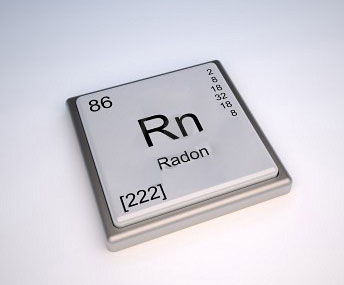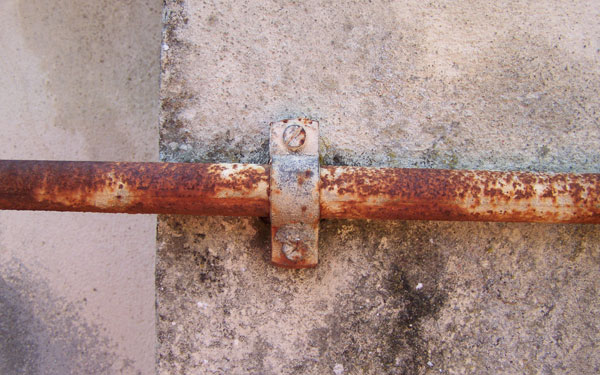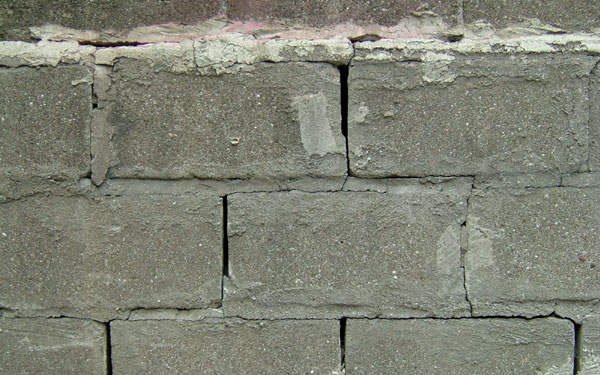 by Jennifer Jones
by Jennifer Jones

In the past decade, homeowners have become increasingly aware of the amount of radon gas that is present in the home. Radon occurs naturally and is produced by the biological breakdown of uranium in the soil, water and rock in the ground. This radioactive gas travels up through the soil and is released into the air. Radon atoms have a pretty short existence, with a half-life of only 3.825 days. After a few days, the radon atom becomes a lead atom.

Unfortunately, slight pressure differences can draw radon gas into our homes. Since air pressure inside the home is lower than the pressure in the soil around the outside, the house acts as a vacuum and can draw radon gas through the foundation. It can seep from the ground into the air in a house through the basement or crawl space. There are many ways that radon gas gets into the home, including drains, sump pumps, exposed soil/dirt floors, cracks in basement foundations, construction slab joints and loose fitting pipes. The levels of radon that build up can be influenced by air movement, type of soil, amount of moisture, groundwater, air pressure, heating and ventilation systems. A home that utilizes well water may have increased amounts radon gas as well as tightly insulated homes can also a higher accumulation of radon. Once it is inside the walls, radon has difficulty escaping to the open air and can build to unsafe levels.

Recently, radon gas has been labeled as a risk factor in developing lung cancer. If you inhale enough radon gas into your lungs, it can build up to unsafe levels and pose a health threat. Radioactive particles from the gas can get trapped in the lungs and release energy as they decay that damages the lung tissue.
Certain regions of the United States produce a higher threat of radon gas than other locations. For instance, areas that have a higher amount of uranium in the soil will have higher amounts of radon gas. The U.S. EPA provides a regional map of the different concentrations of radon in the country. If you are buying, selling or building a home, both the United Stated Environmental Protection Agency (EPA) and the U.S. Office of the Surgeon General recommend that it be tested for radon gas.
Radon Testing
Since it is colorless, odorless and tasteless, special testing equipment is necessary to calculate the amount of radon gas in your home. Additionally, every home is different so you cannot assume that your amount of radon is the same level as in your neighbor's home. There is a variety of different ways that you can efficiently test for radon gas. Many people first try the do-it-yourself kits available at retail stores. Whether you choose a professional service or a home test kit, be sure that it has EPA-approved. If necessary, you can hire an EPA official or a State Certified Radon tester to come to your home and test with radon detecting devices.
It is simple and rather inexpensive to use a test kit to measure radon levels. The kits include complete instructions and most of them offer return postage for mailing the sample results to the analysis lab. Radon test kits range from $10 to $40 and are available at most home improvement stores, online or through a mail order company. Some communities offer free test kits at their county offices. Once again, be sure that the test kit has been approved or listed by the EPA. Read the instructions very carefully to achieve the correct results. The radon testing devices are specific as to the placement and the amount time that is exposed to the air. It is also important to not disturb the test kit while it is monitoring the radon level of a home.
There are two types of radon testing equipment, referred to as passive and active devices. Passive testing devices do not require electrical power to gather data. Charcoal canisters, charcoal liquid scintillation devices, alpha-track detectors and electret ion chamber devices are all consider passive methods. You simply expose the equipment to the air in the home for the instructed amount of time and then mail it to the lab. Active testing devices need a power outlet to function. Most of them continuously detect and monitor the amount of radon and its decay products in the air. After it has finished its monitoring period, the device provides a report on the information that can reveal unusual jumps in radon levels.
Additionally, radon test devices come in short-term and long-term testing kits. Short-term kits can test your home anywhere from two days to three months, depending on which kit is purchased. They are most commonly used when the homeowner needs results quickly to decide whether or not the home needs to be fixed, and are usually followed up with another short-term test. If you use a short-term test, be sure to keep all the windows and doors closed as much as possible to restrict air flow during the testing period. It is best to place the short-term test, such as a charcoal canister, in the lowest livable level of the home and preferably during the winter. It is also most effective in a room that is used on a regular basis, however, avoid placing them in a kitchen, bathroom and laundry room.
Since radon levels vary throughout the day and season, a long-term test will provide more accurate results. Long-term test, suck as alpha track and electret ion chamber detectors, should be left in place for three months to a year. They should also be placed in the lowest occupied level of the home and in a main living area. These long-term tests will provide better information on the levels of radon on a year-round basis.
Measurements of Radon
In order to help understand the test results, radon gas is measured by the amount of radioactivity in units of picocuries per liter (pCi/L). According to the EPA, a measure of 4 pCi/L and above is considered an actionable level. There are four categories for radon measurements:
Low (less than 4 pCi/L) - No action is required.
Slightly High (4 to 20 pCi/L) - Follow-up short-term testing with a year-long test. Action should be taken to reduce exposure within the next few years.
High (20 to 100 pCi/L) - Follow-up testing with short-term devices is recommended. Action is required to reduce radon exposure within the next few months.
Very High (over 100 pCi/L) - Short-term follow-up tests should be performed immediately and action taken as soon as possible.
Radon Mitigation
The lowering of radon levels is referred to as mitigation. Homeowners often use a variety of techniques, depending on the radon levels, size of the home, structural changes, foundation type and affordability. The majority of homes can be fixed for $800 to $2,500.
The most common and effective mitigation method is referred to as sub-slab ventilation or sub-membrane depressurization. This system involves installing pipes that gather the gas from the penetrable layer (such drain tiles or gravel) below the basement floor and funnels it upward through pipes in the home and out the vent in the roof. Some homeowners install a fan in the attic to help draw the gas from the basement or crawl space out through the roof.

Some other mitigation techniques include house pressurization, block wall suction and installing additional ventilation systems. It is also a great idea to seal holes and cracks in floors and foundation walls, seal covers over sump pits and install one-way valves in untrapped drains. Whatever combination of techniques that you choose to utilize, remember to perform radon tests before and after the changes have been made in order to get the most current readings of radon gas levels. This will help you establish if the adjustments are properly reducing the levels of radon gas in your home.
Easy Methods To Reducing Radon Levels
There are several simple ways to lower the amount of radon gas in your home. Properly ventilate the crawl spaces under your house and keep windows open on the lowest level as much as possible. In early spring, open basement windows and keep them open until late in autumn. Use a polyurethane caulking compound to seal cracks in the basement walls and floors. Since open doors can suck air from the basement to the living areas of the home, try to keep stairwell doors, fireplace dampers and laundry chute doors closed when not in use. Additionally, prevent the drain traps from drying out by pouring water in floor drains once a month.

Whether you are staying, moving or building a home, every homeowner should test the radon levels in their house. New home constructions can be planned in advance to install radon reduction methods. Homebuyers and renters should inquire whether or not the dwelling has been tested for radon gas and the results of the tests. Changes in ownership, structural altercations, appearance of foundation cracks and even earthquakes all advocate for retesting of radon levels. At the very least, many homeowners will retest radon levels every two years in order to ensure a healthier lifestyle.
Here are some related articles:
Save this article to:
back to top